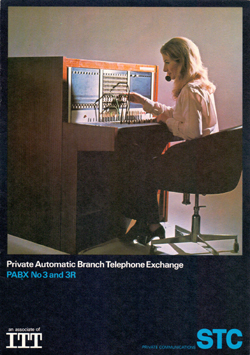a long history...
 |
STC played a major role in developing and supplying equipment for the General Post Office (GPO). |
The history of STC dates back to 1883, but perhaps the era of biggest change was during the 1970s as electromechanical and valve products were displaced by electronic and solid-state devices.
During the 1970s, Standard Telephones and Cables (A British Company of ITT) had nine major manufacturing locations in the UK:
Southhampton
East Kilbride
Newport
Monkstown
Harlow
Basildon
New Southgate
Foots Cray
North Woolwich
It had a multitude of sites producing all kinds of components, and complete systems, for the British Post Office. Electronic components, TXE telephone exchanges, telephone tranmission equipments, submarine cables, and PABX systems were all designed and produced to order.
STC's history is one of mergers and acquisitions, together with political pressures in what was an ever changing industry. Subsidiaries of the parent company, ITT may have used STC's component manufacturing to develop mass consumer products, but the history is outside the scope of these pages. Here we look at the offering of products which were manufactured to support Post Office Telecommunications.
Cable Manufacturing
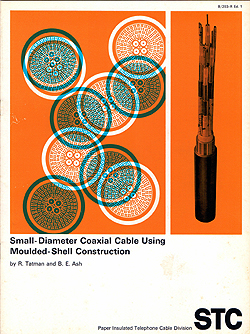 |
Cable manufacturing was an extensive part of STC's operations. |
Transmission Capability
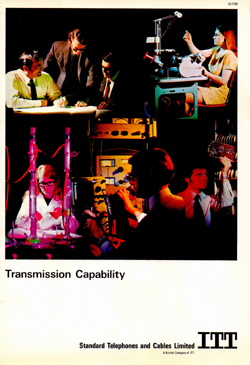 |
STC's Transmission Division was located in Basildon, Essex. In the 1970s its main products were coaxial cable systems, frequency division multiplex equipment and pulse code modulation equipment. |
In 1938 KB (Kolster-Brandes) a UK television manufacturer became part of ITT's British subsidiary STC.
In the 1970s a popular TV advert proclaimed the advantages of ITT's colour set with 'tint control' and compared the contrast of a 'Red Indian's' headress with his face.
TXE4
The TXE2 (electronic exchange) was a collabrative design of the Post Office's pooled manufacturers. TXE4 however was developed and produced exclusively by STC. Sutton Coldfield had the first production TXE4 in service by 1976. The last TXE4s were taken out of service in 1998. Two decades of service and stability of manufacturing capability.
 |
"Having found a good home for our one-millionth TXE4 electronic line, in our one-hundredth British TXE4 electronic exchange, we are now looking rather further afield." |
Adverts
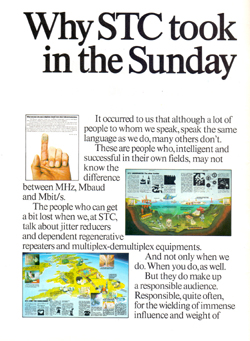 |
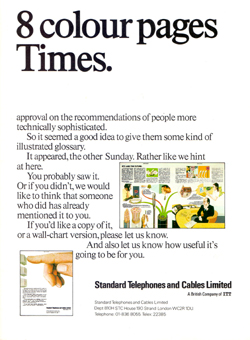 |
Why STC took 8 colour pages in the Sunday Times. |
The Standard
 |
If you worked for Standard Telephones & Cables you will be interested in this website which looks at the history of STC at New Southgate, London. |
www.stlqcc.org.uk/
References
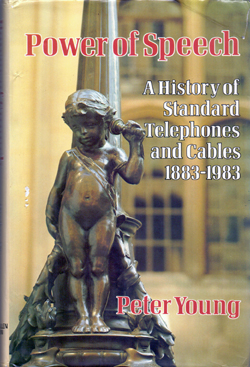 |
Power of Speech: A History of Standard Telephones and Cables 1883-1983. |
All logos and trade marks are the property of their respective owners and are used on the Light Straw site(s) for review only. Students and researchers are recommended to make their own independent enquiries as to the accuracy of the information contained therein.
